- Author: Laura Lukes
Continuing our focus on select species of Eriogonum (wild buckwheat), this week's discussion features California buckwheat (E. fasciculatum).
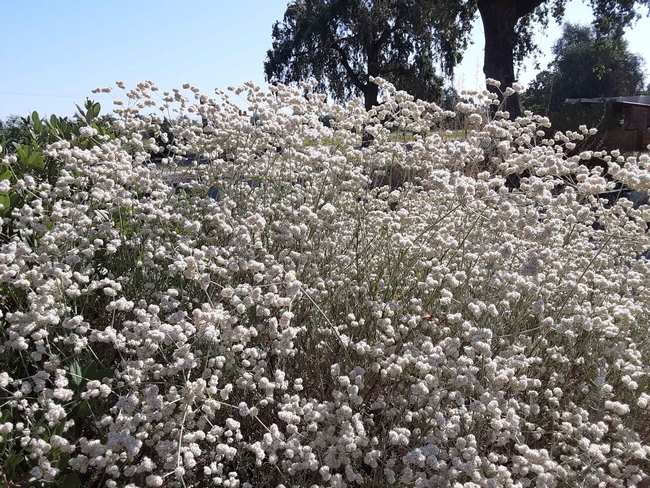
Species Focus - California Buckwheat
Eriogonum fasciculatum, best known as California buckwheat and sometimes called eastern Mojave buckwheat or flat-topped buckwheat, is found primarily on dry slopes and canyon washes in the American West, including Nevada, Utah, and Arizona, in addition to California and reaching as far as Mexico's northwest. In California it is the most widespread of the shrubby buckwheat species, found in abundance in the southern half of our state. It is less common in the Central Valley and northern reaches, although it has proven to be a successful a landscape plant in Butte County. Its adaptation to our Mediterranean climate allows it to survive on as little as seven inches of rain annually.
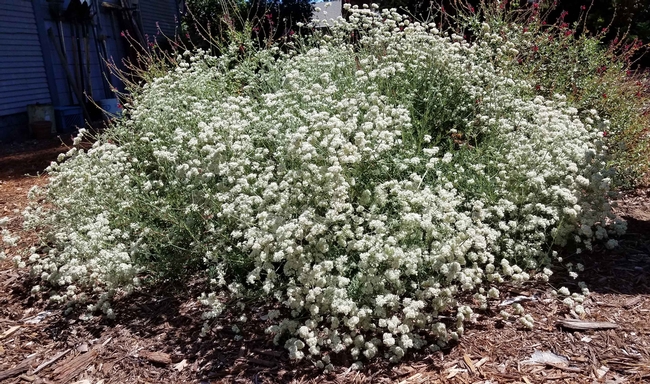
According to California Native Plants for the Garden (an excellent resource for gardeners looking to shift from traditional thirsty landscaping to a yard that conserves water and sustains pollinators), the hairs on E. fasciculatum's leaves contribute to its ability to withstand the dry and harsh conditions of the ecosystems it inhabits. Hairy leaves provide insulation from heat and protection from direct sunlight as well as a boundary air layer that reduces water loss.
Its genus name, fasciculatum, comes from the Latin word meaning “bundles,” used in botany to refer to the growth habit of plant leaves. It shares this genus name with many other plant species.
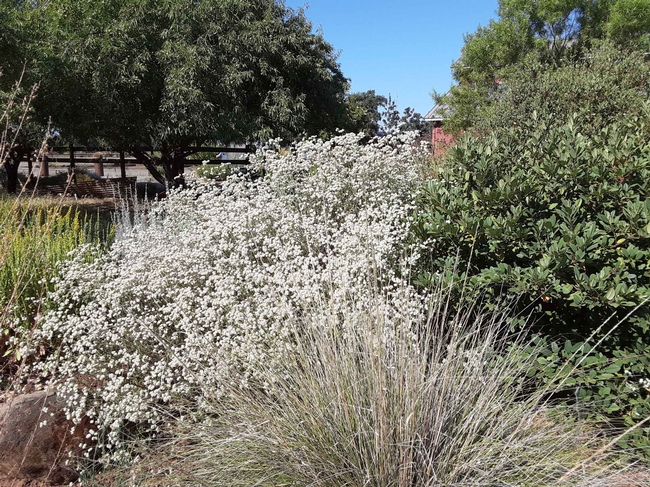
Native American peoples in the west and southwest used different parts of the California buckwheat for nutrition and medicine. The Cahuilla tribe of what is now the greater Palm Springs area used this plant in many ways: they treat headaches and stomach pains with tea made from its leaves; treated colds and sore throats with tea made by steeping its roots; and applied poultices made from pounded roots to wounds. Cahuilla peoples also treated heart problems with tea from the dried flowers and dried roots of E. fasciculatum. Modern science has verified that a chemical compound common to several plant species including Eriogonum can be beneficial to hearts (USDA Plant Profile).
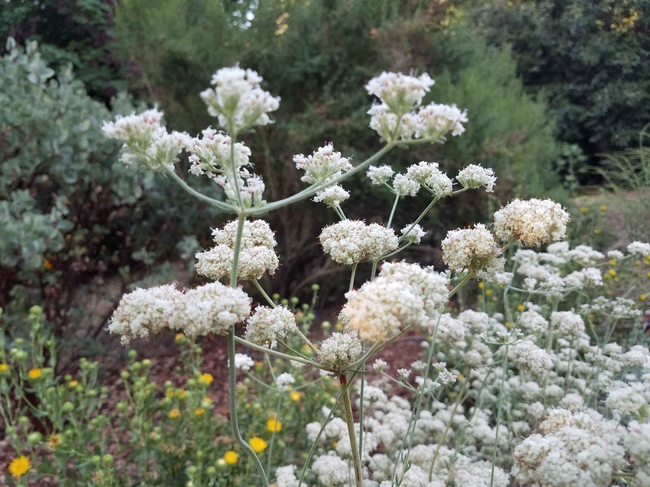
If you plant E.fasciculatum in your yard, be sure to locate it away from regular irrigation sources and in soil that drains well. It will be happy if you give it problem soil (rocky, alkaline, etc.). Make sure it has room to expand or even take over, because it can become invasive. It is an attractive and valuable addition to any drought resistant, native pollinator garden.
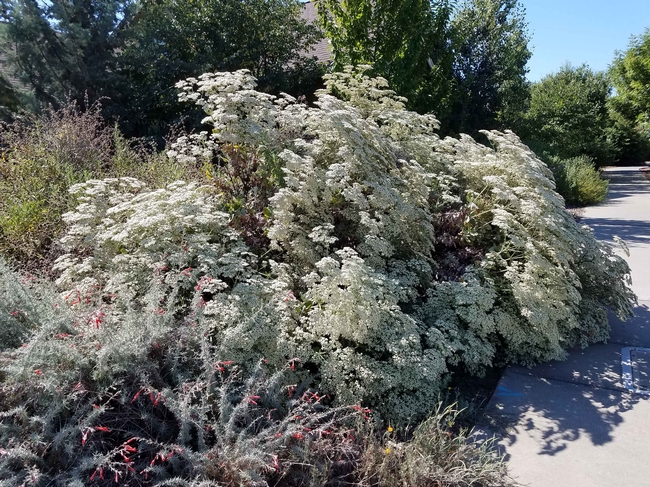
For more information on E. fasciculatum, see the following sources:
United States Department of Agriculture, Natural Resources Conservation Service, Plants Database
Carol Bornstein, David Fross, and Bart O'Brien, California Native Plants for the Garden (Cachuma Press, 2005)
The UC Master Gardeners of Butte County are part of the University of California Cooperative Extension (UCCE) system, serving our community in a variety of ways, including 4H, farm advisors, and nutrition and physical activity programs. Master Gardeners bring practical, scientifically-based knowledge directly to our community. For help with gardening in our area, visit our website. If you have a gardening question or problem, call the Master Gardener Hotline at (530) 538-7201 or email mgbutte@ucanr.edu.


